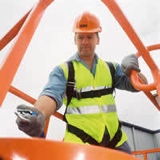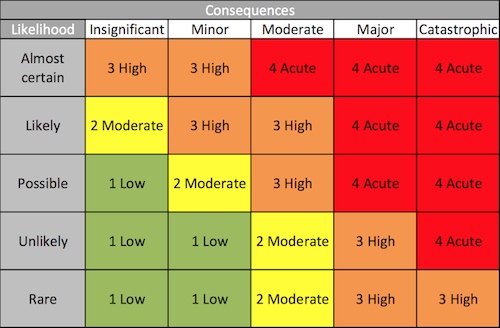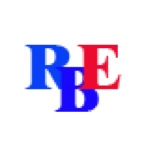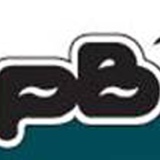Title Page
-
Job Address / Title:
Safe Work Method Statement (SWMS) - Part 1
-
Activity: Heights - Working at Heights
-
Review Number: 1
-
Address: 572 Cummins lane, Broken Hill, 2880
-
ABN: 74627943337
-
Company contact: Wiremu Roberts
Position: Director
Phone No: 0415598146
Relevant workers must be consulted in the development, approval and communication of this SWMS.
-
Add workers to be consulted:
Worker
-
Name: Wiremu Roberts
Job title: Director
SWMS APPROVED BY: (Employer/PCBU/Director/Owner)
-
Name: Wiremu Roberts ( Director )
Project Details
-
Job Address:
-
Job Description:
-
Principal Contractor company name: W Roberts Electrical
Principal contractor name and signature: Wiremu Roberts -
Date SWMS provided to Principal Contractor:
-
Name and signature of person responsible for ensuring compliance with SWMS: Wiremu Roberts
Risk Assessment Matrix
-
- 4A: Acute DO NOT PROCEED > requires immediate attention. Introduce further high-level controls to lower the risk level.
- 3H: High > Review before commencing work. Introduce new controls and/or maintain high-level controls to lower the risk level. Monitor frequently to ensure control measures are working.
- 2M: Moderate > Maintain control measures. Proceed with work. Monitor and review regularly, and if any equipment/people/materials/work processes or procedures change.
- 1L: Low > Record and monitor. Proceed with work. Review regularly, and if any equipment/people/materials/work processes or procedures change. -
Hierarchy of Controls
-
• Elimination - Risk will be eliminated where possible
↓
• Substitution Isolation Engineering - Where risk remains, one/combination of controls will be used
↓
• Administrative - Where risk remains, administrative controls will be used
↓
• Personal Protective Equipment (PPE) - Where risk still remains, it will be reduced as far as reasonably practicable with use of PPE.
Activity: Heights - Working at - Part 2
-
Overall Risk Rating after Controls
SWMS Scope
-
SWMS Scope: This SWMS covers the risk management processes and procedures that need to be followed when preparing to work at height. Covered in this document is planning and preparation, pre-start inspections, operational considerations and emergency management procedures. This SWMS does not cover Elevated Work Platforms (e.g. cherry pickers, scissor lifts), Erecting scaffolding, Attaching restraints, Installation of edge protection, Work tasks in sufficient detail. Dedicated SWMS should be developed for these tasks, and for any risks not covered in this SWMS.
Due to the high-risk nature of working at height, Height equipment specific SWMS will need to be implemented for these tasks prior to commencing the activity or this SWMS modified to suit.
Personal Protective Equipment (PPE) Ensure all PPE meets relevant Australian Standards. Inspect and replace PPE as needed.
-
Foot Protection
-
Hearing Protection
-
High Visibility
-
Head Protection
-
Eye Protection
-
Hand Protection
-
Sun Protection: Broad brimmed hat, UV rated clothing, SPF 30+ sunscreen, tinted safety glasses with adequate UV protection
High Risk Construction Work
-
This work activity involves the following “High Risk Construction Work”:
• Moving Plant
• Working at heights greater than 2 Metres, including work on telecommunications towers.
Job Step: Planning
-
Consultation in relation to hazards and risks. Ensure:
- Consult with the person you are carrying out the work for on the potential hazards and risks associated with the task
- If represented by an elected Health and Safety Representative (HSR), they must be included in any consultation
- Any other persons on site who are affected by the same matter are consulted and co-operative arrangements are made
- Document consultation and action items.
Liaise with Principal Contractor to establish that the following on-site systems and procedures are in place:
- Health and Safety rules
- Induction for all workers – site specific
- Supervisory arrangements
- Communication
- Injury reporting
- Hazard reporting
- Personal Protective Equipment
- Exclusion Zones
- Risk Assessments
- SWMS and JSA’s. -
Assess the exposure of workers to noise, including the frequency of exposure to noise levels that exceed the legislated Exposure Standard while working on site and determine required controls such as Audiometric Testing and PPE. Refer to Noise Control SWMS for detailed information regarding the prevention of hearing loss and legislative requirements.
Audiometric Testing. If Audiometric testing is required it must:
- Be provided within three months of the worker commencing work
- Be started before people are exposed to hazardous noise (such as new workers or those changing jobs)
- Provide a baseline as a reference for future audiometric test results
- Have follow-up tests carried out at least every two years.
- Be carried out with consultation with your workers and their health and safety representatives
- Be carried out by competent persons in accordance with the procedures in the relevant Australian Standard
- Workers should be given the results of audiometric testing accompanied by a written explanation of the meaning and implications. -
All workers to be trained, licenced and competent to work at heights. Working at heights is a High Risk Work activity as outlined in the WHS Regulations 2011, all workers working at height must have the appropriate licence, check with relevant authority on High Risk Work Licences. Training must include:
- General induction (include location of amenities, first aid facilities, emergency plans and evacuation points, incident reporting, communication, contact persons etc.)
- Construction Induction Card or equivalent
- Site-specific induction (include manual task risk assessment and management and working at heights. Include specific requirements for working at height e.g. Codes of conduct for personal interactions
- Health and Safety Rules for site
- PPE requirements for site
- Types of hazards for site
- Traffic Management plans for any vehicles or powered mobile plant associated with this work
- Relevant additional SWMS in place and followed e.g. work platforms, scissor lifts SWMS
- Site security requirements
- Ensure all persons entering site have a General Construction Induction Card -
- Sufficient time for job, number of workers
- First aid kit/supplies
- Communication devices (check mobile phones, satellite phones or radios will have service in area)
- Drinking water, clean up and toilet facilities.
Identify all fall hazards that may arise from the activity. Consider:
- Surface condition (e.g. fragile surface such as old roofs, skylights)
- Unstable footing (e.g. wet slippery floor, sloping surfaces)
- Unprotected edges (e.g. roof tops, shafts)
- Where surfaces may change level
- Weather conditions (rain, wind, fog, dew)
- Power lines in close proximity
- Lack of training
- Equipment to be used (example elevated work platform, or portable ladders). -
Conduct risk assessment of proposed activity based on identified hazards. Consider:
- Whether the task can be wholly or partly completed on the ground or solid construction (e.g. assemble a piece of plant on the ground and lift with a crane rather than assembling at height)
- Severity of the risk of falling
- Likelihood of a fall occurring
- Any existing controls measures and whether they are sufficient
- Measures to be put in place to control risk
- Determine if current training and experience sufficient for undertaking the task at height
- Determine if emergency procedures would be acceptable
- Document risk assessment. -
Ensure all relevant workers undertake training and receive instruction in the use of control measures. Include:
- Reporting procedures for incidents
- Correct use of fall restraint equipment including selecting, fitting, use, care of and maintenance
- Correct use of all equipment used
- Correct use of tools used
- Use of supervision where required (e.g. new starters or new equipment)
- Recognition and control of falling hazards
- Limitations of the equipment
- Rescue procedures in the event of a fall
- Correct procedure for handling equipment and materials while working at heights
- Manual handling. -
Person responsible to implement control measures: Wiremu Roberts
Job Step: Preparation
-
Working outdoors. Ensure:
- Suitable protective clothing
- Sun brim on hard hat
- Safety glasses - UV Rated
- Use 30+ sunscreen on exposed skin areas
- Adequate drinking water
- Access to shade during breaks
- Adequate breaks
- Check weather conditions – do not work in extreme weather. -
Based on the Risk Assessment for the task adopt one or more of the following control for working at height: Ensure always adopt the highest level of controls possible:
- (Higher) Use a passive fall restraint system e.g. guard rails, scaffolding, elevated work platform
- (Medium) If option one (1) is not reasonably practicable, provide a work positioning system e.g. Industrial rope access or a travel restraint
- (Lower) If option one (1) or two (2) are not reasonably practicable then use a fall arrest system e.g. catch platforms, safety harness. -
Note: Consideration should be made to use more than one type of control where required.
If a fall arrest system is utilised, emergency and rescue procedures must be developed for the system. Do not commence work until:
- These procedures are developed and in place
- The procedures have been tested
- All relevant workers are provided training and instruction in these emergency and rescue procedures.
Barricading and signage is developed for particular site. Ensure:
- Signs used to provide clear instruction on required PPE, entry permissions and hazard areas
- Clearly identified vehicle and pedestrian access paths, parking/ loading zones, traffic controllers
- Consider appropriate barricades for exclusion zones. Conduct risk assessment and utilise appropriate barricade for exclusion zones. -
Locate:
- Any existing power cables, water pipes, air conditioning ducts etc. prior to work commencing.
Power cables:
- Depending upon the risk of electrocution to on site workers (roof workers, crane operators, labourers etc.) the following must be considered:
- “Tiger Tails” can be installed. (Note: Tiger tails ONLY give a visual warning of the proximity of power lines)
- Power cables can be redirected or power isolated for the duration of the work.
Emergency procedures. Ensure:
- Adequate number of first aid trained staff are on site when working at heights occurs
- First aiders are trained and competent in managing injuries associated with falls until emergency services arrive. -
Person responsible to implement control measures: Wiremu Roberts
Job Step: Pre- start Inspection
Hazards include:
-
- Adverse weather - hot, cold, windy, wet
- Overhead power lines
- Plant – operating
- Equipment failure - Scaffold /trestle / ladder /EWP / harnesses etc
- Inappropriate equipment/plant.
Risks include:
-
- Wind gusts causing equipment failure or sudden movement resulting in fall from height
- Being struck by lightning causing burns, electrocution
- Equipment failure resulting in fall from height
- Electric Shock/ Electrocution
- Fall off plant causing injury /death
- Being run over/ struck by mobile plant causing serious injury/ death
- Collision with objects / plant
- Slips, trips & falls – fractures, sprains, strains.
Control Measures to Reduce Risk
-
Risk Ratings Before Control:
-
Hearing protection, ensure:
- It is worn by all persons throughout the period of exposure to noise
- It is suitable for the type of working environment and the work tasks
- It s comfortable and correctly fitting for the worker
- It is regularly inspected and maintained to ensure it remains in good, clean condition.
Ensure workers are in fit condition to work i.e. no signs of fatigue, alcohol or drugs.
Inspect tools and equipment. Ensure:
- No signs of corrosion, damage, wear or faults
- Hand tools are free of damage and in good condition
- Power tools are guarded, in good condition, tested/tagged etc. -
Inspect Height-access Equipment. Ensure:
- Exactly as outlined in the order / design specifications
- Controls labelled, gauges, indicators functional
- Safety decals in place and legible
- Work lighting sufficient and functional
- SWL displayed (where required)
- All safety guards are in place and undamaged
- Harness/Lanyard/Anchors good condition
o Meet relevant Australian Standard
o Load information legible
o Clips are compatible and have safety latches in place
o Good condition, clean
o Formal training conducted for use
- Serviced/Maintained.
If any equipment is damaged or unsuitable for the task do not use. Take out of service immediately and apply LOTO (Lock-Out / Tag-Out) procedures.
Whenever any person is wearing a harness, a rescue plan must be in place as suspension trauma can occur to persons who fall and remain in the harness for more than 5 minutes. -
Inspect working surface e.g. plant, roof etc.
- Check for moisture, dust or any other condition that may cause loss of stable footing
- Access is available e.g. entry through edge protection or other (do not climb on the outside of scaffold or over top rails of edge protection)
- Surface is strong enough to support weight (seek advice from competent person if unsure (e.g. engineer)
- Check for damage or rusted areas.
Ensure:
- This SWMS has been reviewed by all relevant persons undertaking a task at height
- Relevant detailed SWMS are also in place for the particular control measures being used for working at height (e.g. scissor lifts, scaffolding, harness etc.) -
Person responsible to implement control measures: Wiremu Roberts
-
RIsk Ratings After Control:
Job Step: Working at height
Hazards include:
-
- Adverse weather - hot, cold, windy, wet
- Falls from a height
- Work at height above 2 metres
- Overhead power lines
- Plant – operating
- Equipment failure - Scaffold /trestle / ladder /EWP / harnesses etc
- Inappropriate equipment/plant
- Work outdoors
- Hazardous Manual Tasks - awkward, twisting, bending positions.
Risks include:
-
- Heat exhaustion, sunstroke, dehydration
- Wind gusts causing equipment failure or sudden movement resulting in fall from height
- Being struck by lightning causing burns, electrocution
- Falling from height causing serious injury or death
- Falling objects – being struck / crushed
- Equipment failure resulting in fall from height
- Electric Shock/ Electrocution
- Entrapment - by machinery or equipment
- Fall off plant causing injury /death
- Being run over/ struck by mobile plant causing serious injury/ death
- Collision with objects / plant
- Friction injury – rubbing, chaffing, rope burn
- Burn – Sunburn
- Slips, trips & falls – fractures, sprains, strains
- Muscular stress/ Musculoskeletal Disorder.
Control Measures to Reduce Risk
-
RIsk Rating Before Control: 4A
-
Hazardous Manual Handling:
- Avoid long periods of repetitive movements
- Avoid awkward and sustained positions
- Use mechanical lifting aids when possible
- Use two or more people for lifting & moving heavy / awkward equipment
- Regular breaks.
Ensure:
- Workers comply with all reasonable instructions relating to work methods, directions from supervisors and any applicable user guide or manual for equipment. -
Working on solid structures. Ensure:
- Where reasonably practicable, edge protection is in place
- Edge protection barriers are strong enough to withstand the pressure of a person falling against it
- Where access is required through edge barrier, gates or other mechanisms can also restrain and withstand the force of a person falling against it.
Holes or other openings through which a person can fall. Ensure:
- All holes or openings are protected from falls immediately after creating
- Use signage or other clearly marked hazard alert to identify hazard
- Cover hole/opening with a material strong enough to support the weight of a person falling or stepping onto it
- Ensure the cover is secured to prevent movement. -
Work positioning. Ensure:
- Use all height-access equipment as per manufacturer’s instructions and for its designed purpose
- Do not exit EWP in raised positions
- Use only ladders provided for access to scaffolds, towers etc
- When working on a ladder, do not over reach. Descend ladder and re-position as required
- Do not carry materials when ascending/descending a ladder.
Avoid working in static or awkward postures (such as bending or working with arms raised above head height) for more than 30 minutes at a time and/or 2 hours over entire shift. -
Person responsible to implement control measures: Wiremu Roberts
-
RIsk Rating After Control: 3H
Job Step: Maintenance
Hazards include:
-
- Equipment failure - Scaffold /trestle / ladder /EWP / harnesses etc
- Inappropriate equipment/plant
- Hazardous Manual Tasks - awkward, twisting, bending positions.
Risks include:
-
- Serious injury or death as a result of inadequate maintenance and selection of equipment / plant
- Muscular stress/ Musculoskeletal Disorder.
Control Measures to Reduce Risk
-
RIsk Rating Before Control: 4A
-
Ensure all servicing, maintenance and repairs are performed by suitably qualified & competent persons.
Follow manufacturer’s instructions for maintenance schedule of all machinery and equipment.
Do not rely on hydraulic system to hold any part of equipment in raised position during maintenance.
Always use suitable Safe Working Load (SWL) blocks/jacks and/or on-board safety features.
Ensure:
- All Maintenance, service and repair is carried out as necessary
- Preventative maintenance program based on work environment, frequency and severity of use
- All safety related problems rectified before any equipment is used
- All replacement parts comply with manufacturers specifications
- Inspections shall be carried out with sufficient frequency to ensure equipment remains in good condition
- Records (logbook, inspection reports, maintenance) kept and easily accessible.
Lock-out/tag-out procedures must be followed when conducting any maintenance. -
Person responsible to implement control measures: Wiremu Roberts
-
RIsk Rating After Control: 3H
Emergency Procedures / Emergency Response
-
Emergency Response: Call 000 immediately, then administer first aid to injured person/s, and refer to emergency plan.
Develop and implement an emergency response plan for the site. Include:
- Assembly points
- Communication
- Consultation methods
- Responsible persons
- Emergency contacts - names and phone numbers
- First aid equipment
- Fire Extinguishers – accessible & serviced. -
Ensure all workers on-site are trained and familiar with emergency and evacuation procedures.
Note: Whenever any person is wearing a harness, a rescue plan must be in place as suspension trauma can occur to persons who fall and remain in the harness for more than 5 minutes.
Develop site-specific rescue procedures/SWMS. -
person responsible to implement and follow emergency procedures and control measures: Wiremu Roberts
Review
-
To ensure controls are implemented and monitored effectively:
• Toolbox /pre-work meetings will be undertaken
• Relevant persons will be consulted on hazards and contents of SWMS, work plans and other applicable information
• Control measures will be monitored throughout works:
o Spot checks
o Consultation
o Scheduled audits
• Corrective actions will be recorded and rectified in a timely manner SWMS will be reviewed and updated accordingly (in consultation with relevant persons) -
Ensure all controls are reviewed as per the following:
• If controls fail to reduce risk adequately
• When changes to the workplace or work activity occur that create new / different risks where controls may no longer be effective
• New hazards identified
• After an incident involving work activities relevant to this SWMS
• During consultation with relevant persons indicate review is needed
• A Health and Safety Representative (HSR) requests a review in line with the requirements of the legislation. -
Person responsible to implement and follow monitoring and review procedures and control measures: Wiremu Roberts
Relevant Legislation, Codes of Practice:
-
Note: Retain only the legislation references applicable to your state of operation for this SWMS.
-
Commonwealth, NSW, QLD, ACT
-
o Work Health and Safety Act 2011
o Work Health and Safety Regulations 2011
Codes of Practice
-
Commonwealth, NSW, QLD, ACT, NT, SA, Tas.
-
Safe Work Australia (2011):
o Construction Work
o First Aid in the Workplace
o Managing the Risk of Falls at Workplaces
o Managing the Risk of Plant in the Workplace
o Managing Noise and Preventing Hearing Loss in the Workplace
o How to Manage Work Health and Safety Risks
o Hazardous Manual Tasks
o Managing Electrical Risks in the Workplace
o Managing the Work Environment and Facilities
o WHS Consultation, Cooperation & Coordination
Australian Standards
-
o AS/NZS1269: 2005 Occupational noise management
o AS/NZS 4501:2008 (set) Occupational Protective Clothing
o AS4024.1: 1996 Safeguarding of machinery - General principles
o AS 4024.1:2006 Safety of machinery
o AS/NZS 1576.1:2010 Scaffolding – General requirements
o AS.1892.5: 2000 Portable Ladders – selection, safe use and care
o AS 1319:1994 Safety Signs for Occupational Environment
o AS/NZS 3760:2010 In-service safety inspection and testing of electrical equipment
o AS/NZS 4576:1995 Guidelines for Scaffolding
o AS 1576.4:2013 Scaffolding; suspended scaffolding
o AS/NZS 4994 Temporary Edge Protection
o AS 2550 Series: Cranes, Hoists and Winches: Safe Use
o AS/NZS 1657Fixed platforms, walkways, stairways and ladders - Design, construction and installation
o AS/NZS 1891.1 (set) Industrial fall-arrest systems and devices - Harnesses and ancillary equipment
Reference Documents
-
Safe Work Australia (2011): Code of Practice: Managing the Risk of Falls at Workplaces
Safe Work Australia (2011): Code of Practice: Managing Noise and preventing hearing loss at work
Safe Work Australia (2011): Code of Practice: Hazardous Manual Tasks
Safe Work Australia (2011): Code of Practice: Control of workplace hazardous substances
WorkSafe Victoria (2008): Compliance Code: Prevention of falls in General Construction Health and Safety Executive (HSE) (2005) Safe Use of Ladders and Step Ladders – An Employers Guide
Sai Global: Australian Standard: AS/NZS 3760:2010 In-service safety inspection and testing of electrical equipment
Safe Work Method Statement (SWMS) - Part 3
-
Formal training, Licenses required to workers undertaking this task:
Working at heights certificate.
Construction card -
Duties of workers undertaking this task: Working at heights, climbing ladders.
-
Details of Supervisory Arrangements for workers undertaking this task: Business owner, Wiremu Roberts
-
Plant/Tools/Equipment: (List plant and equipment to be used on the job).
Basic Hand tools
Battery operated tools
ladder
testing equipment
Worker Sign-off
-
This SWMS has been developed in consultation and cooperation with employee/workers and relevant Employer/Persons Conducting Business or Undertaking (PCBU). I have read the above SWMS and I understand its contents. I confirm that I have the skills and training, including relevant certification to conduct the task as described. I agree to comply with safety requirements within this SWMS including risk control measures, safe work instructions and Personal Protective Equipment described.
Employee
-
Employee/Worker Name and Signature:
-
Signature
-
Job Role/Position
-
Employer/PCBU/Supervisor: Wiremu Roberts
W Roberts Electrical












